
AI in Email Marketing: Personalization and Automation
Last updated: December 07, 2025 Read in fullscreen view
- 09 Oct 2022
 Rapid Application Development Case Study - TIGO Consulting 23/570
Rapid Application Development Case Study - TIGO Consulting 23/570 - 25 Nov 2025
 How AI Agents Are Redefining Enterprise Automation and Decision-Making 22/36
How AI Agents Are Redefining Enterprise Automation and Decision-Making 22/36 - 18 Oct 2020
 How to use the "Knowns" and "Unknowns" technique to manage assumptions 21/989
How to use the "Knowns" and "Unknowns" technique to manage assumptions 21/989 - 05 Oct 2025
 The New Facebook Algorithm: A Paradigm Shift in Content Discovery 19/46
The New Facebook Algorithm: A Paradigm Shift in Content Discovery 19/46 - 01 Jul 2025
 The Hidden Costs of Not Adopting AI Agents: Risk of Falling Behind 17/108
The Hidden Costs of Not Adopting AI Agents: Risk of Falling Behind 17/108 - 07 Nov 2025
 Online vs. Offline Machine Learning Courses in South Africa: Which One Should You Pick? 16/30
Online vs. Offline Machine Learning Courses in South Africa: Which One Should You Pick? 16/30 - 01 Oct 2020
 Fail fast, learn faster with Agile methodology 13/973
Fail fast, learn faster with Agile methodology 13/973 - 03 Nov 2023
 Why Is Billable Viable Product An Alternative To Minimum Viable Product? 12/165
Why Is Billable Viable Product An Alternative To Minimum Viable Product? 12/165 - 21 Nov 2025
 The Rise of AgentOps: How Enterprises Are Managing and Scaling AI Agents 12/43
The Rise of AgentOps: How Enterprises Are Managing and Scaling AI Agents 12/43 - 06 Nov 2025
 Top 10 AI Development Companies in the USA to Watch in 2026 10/36
Top 10 AI Development Companies in the USA to Watch in 2026 10/36 - 30 Jul 2024
 The Future of IT Consulting: Trends and Opportunities 8/131
The Future of IT Consulting: Trends and Opportunities 8/131 - 18 Jul 2024
 The 8 Best ways to Innovate your SAAS Business Model in 2024 8/204
The 8 Best ways to Innovate your SAAS Business Model in 2024 8/204 - 10 Nov 2022
 Poor Code Indicators and How to Improve Your Code? 7/213
Poor Code Indicators and How to Improve Your Code? 7/213 - 19 Oct 2021
 Is gold plating good or bad in project management? 7/754
Is gold plating good or bad in project management? 7/754 - 10 Aug 2024
 Odoo vs. Lark: A Comprehensive Comparison 7/683
Odoo vs. Lark: A Comprehensive Comparison 7/683 - 14 Aug 2024
 From Steel to Software: The Reluctant Evolution of Japan's Tech Corporates 6/488
From Steel to Software: The Reluctant Evolution of Japan's Tech Corporates 6/488 - 06 Feb 2021
 Why fail fast and learn fast? 6/375
Why fail fast and learn fast? 6/375 - 27 Jul 2024
 Positive Psychology in the Digital Age: Future Directions and Technologies 6/337
Positive Psychology in the Digital Age: Future Directions and Technologies 6/337 - 01 Mar 2023
 Bug Prioritization - What are the 5 levels of priority? 6/207
Bug Prioritization - What are the 5 levels of priority? 6/207 - 11 Oct 2022
 Why choose Billable Viable Product (BVP) over Minimum Viable Product (MVP) 5/315
Why choose Billable Viable Product (BVP) over Minimum Viable Product (MVP) 5/315 - 05 Aug 2024
 Revisiting the Mistake That Halted Japan's Software Surge 5/320
Revisiting the Mistake That Halted Japan's Software Surge 5/320 - 24 Dec 2024
 Artificial Intelligence and Cybersecurity: Building Trust in EFL Tutoring 5/144
Artificial Intelligence and Cybersecurity: Building Trust in EFL Tutoring 5/144 - 14 Oct 2021
 Advantages and Disadvantages of Time and Material Contract (T&M) 4/789
Advantages and Disadvantages of Time and Material Contract (T&M) 4/789 - 08 Oct 2022
 KPI - The New Leadership 3/557
KPI - The New Leadership 3/557 - 31 Oct 2021
 Tips to Fail Fast With Outsourcing 3/375
Tips to Fail Fast With Outsourcing 3/375 - 18 Aug 2022
 What are the consequences of poor requirements with software development projects? 3/242
What are the consequences of poor requirements with software development projects? 3/242 - 27 Feb 2025
 How AI Agents are Changing Software Development? 3/170
How AI Agents are Changing Software Development? 3/170 - 09 Oct 2024
 Short-Form Video Advertising: The Secret to Captivating Your Audience 3/107
Short-Form Video Advertising: The Secret to Captivating Your Audience 3/107 - 09 Jul 2024
 What Is Artificial Intelligence and How Is It Used Today? 3/216
What Is Artificial Intelligence and How Is It Used Today? 3/216 - 08 Feb 2024
 Case Study: How and why I built Japan Dev? 2/196
Case Study: How and why I built Japan Dev? 2/196 - 10 Sep 2024
 Leading Remote Teams in Hybrid Work Environments 2/125
Leading Remote Teams in Hybrid Work Environments 2/125 - 18 Aug 2024
 The Future of Web Development: Emerging Trends and Technologies Every Developer Should Know 2/173
The Future of Web Development: Emerging Trends and Technologies Every Developer Should Know 2/173 - 04 Oct 2023
 The Future of Work: Harnessing AI Solutions for Business Growth 2/258
The Future of Work: Harnessing AI Solutions for Business Growth 2/258 - 21 Aug 2024
 What is Singularity and Its Impact on Businesses? 2/324
What is Singularity and Its Impact on Businesses? 2/324 - 05 Jun 2025
 How AI-Driven Computer Vision Is Changing the Face of Retail Analytics 2/77
How AI-Driven Computer Vision Is Changing the Face of Retail Analytics 2/77 - 17 Oct 2025
 MLOps vs AIOps: What’s the Difference and Why It Matters 2/66
MLOps vs AIOps: What’s the Difference and Why It Matters 2/66 - 21 Apr 2025
 Agent AI in Multimodal Interaction: Transforming Human-Computer Engagement 2/147
Agent AI in Multimodal Interaction: Transforming Human-Computer Engagement 2/147 - 25 Jan 2025
 The Decline of Traditional SaaS and the Rise of AI-first Applications 2/73
The Decline of Traditional SaaS and the Rise of AI-first Applications 2/73 - 28 Dec 2021
 8 types of pricing models in software development outsourcing 2/417
8 types of pricing models in software development outsourcing 2/417 - 13 Dec 2020
 Move fast, fail fast, fail-safe 2/292
Move fast, fail fast, fail-safe 2/292 - 23 Sep 2021
 INFOGRAPHIC: Top 9 Software Outsourcing Mistakes 2/411
INFOGRAPHIC: Top 9 Software Outsourcing Mistakes 2/411 - 17 Feb 2022
 Prioritizing Software Requirements with Kano Analysis 2/280
Prioritizing Software Requirements with Kano Analysis 2/280 - 10 Dec 2023
 Pain points of User Acceptance Testing (UAT) 2/416
Pain points of User Acceptance Testing (UAT) 2/416 - 21 Dec 2023
 Top 12 Low-Code Platforms To Use in 2024 2/1147
Top 12 Low-Code Platforms To Use in 2024 2/1147 - 31 Dec 2022
 The New Normal for Software Development 2/343
The New Normal for Software Development 2/343 - 10 Jan 2024
 Like for Like – how to preserves existing business and leverage technological advancement 2/336
Like for Like – how to preserves existing business and leverage technological advancement 2/336 - 28 Nov 2025
 How AI Will Transform Vendor Onboarding and Seller Management in 2026 2/19
How AI Will Transform Vendor Onboarding and Seller Management in 2026 2/19 - 26 Dec 2023
 Improving Meeting Effectiveness Through the Six Thinking Hats 1/205
Improving Meeting Effectiveness Through the Six Thinking Hats 1/205 - 31 Dec 2022
 Future of Software Development Trends and Predictions for 2023 1/120
Future of Software Development Trends and Predictions for 2023 1/120 - 05 Jan 2024
 Easy ASANA tips & tricks for you and your team 1/180
Easy ASANA tips & tricks for you and your team 1/180 - 11 Jan 2024
 What are the Benefits and Limitations of Augmented Intelligence? 1/434
What are the Benefits and Limitations of Augmented Intelligence? 1/434 - 03 Jan 2024
 Why Partnership is important for Growth? 1/145
Why Partnership is important for Growth? 1/145 - 19 Apr 2021
 7 Most Common Time-Wasters For Software Development 1/525
7 Most Common Time-Wasters For Software Development 1/525 - 16 Aug 2022
 What is a Headless CMS? 1/225
What is a Headless CMS? 1/225 - 16 Sep 2022
 Examples Of Augmented Intelligence In Today’s Workplaces Shaping the Business as Usual 1/394
Examples Of Augmented Intelligence In Today’s Workplaces Shaping the Business as Usual 1/394 - 20 Feb 2025
 How Machine Learning is Shaping the Future of Digital Advertising 1/76
How Machine Learning is Shaping the Future of Digital Advertising 1/76 - 06 May 2025
 How Machine Learning Is Transforming Data Analytics Workflows 1/148
How Machine Learning Is Transforming Data Analytics Workflows 1/148 - 20 Aug 2025
 What Is Agentic AI? The Next Phase of Artificial Intelligence 1/96
What Is Agentic AI? The Next Phase of Artificial Intelligence 1/96 - 29 Oct 2024
 Top AI Tools and Frameworks You’ll Master in an Artificial Intelligence Course 1/328
Top AI Tools and Frameworks You’ll Master in an Artificial Intelligence Course 1/328 - 22 Nov 2024
 The Role of AI in Enhancing Business Efficiency and Decision-Making 1/154
The Role of AI in Enhancing Business Efficiency and Decision-Making 1/154 - 02 Dec 2024
 The Intersection of AI and Business Analytics: Key Concepts to Master in Your Business Analytics Course 1/252
The Intersection of AI and Business Analytics: Key Concepts to Master in Your Business Analytics Course 1/252 - 02 Sep 2024
 Toolzoon Review: Features, Benefits, and Essential Tools for Enhanced Productivity 1/180
Toolzoon Review: Features, Benefits, and Essential Tools for Enhanced Productivity 1/180 - 05 Aug 2024
 Affordable Tech: How Chatbots Enhance Value in Healthcare Software 1/142
Affordable Tech: How Chatbots Enhance Value in Healthcare Software 1/142 - 25 Sep 2024
 Enhancing Decision-Making Skills with an MBA: Data-Driven Approaches for Business Growth /177
Enhancing Decision-Making Skills with an MBA: Data-Driven Approaches for Business Growth /177 - 21 Oct 2024
 Simplify Your Workflow with an AI Summary Generator /101
Simplify Your Workflow with an AI Summary Generator /101 - 27 Aug 2025
 How AI Consulting Is Driving Smarter Diagnostics and Hospital Operations /66
How AI Consulting Is Driving Smarter Diagnostics and Hospital Operations /66 - 15 Aug 2025
 Quantum Technology: Global Challenges and Opportunities for Innovators /56
Quantum Technology: Global Challenges and Opportunities for Innovators /56 - 29 Aug 2025
 How AI Is Transforming Modern Management Science /33
How AI Is Transforming Modern Management Science /33 - 22 Sep 2025
 Why AI Is Critical for Accelerating Drug Discovery in Pharma /53
Why AI Is Critical for Accelerating Drug Discovery in Pharma /53 - 24 Oct 2025
 AI Agents in SaaS Platforms: Automating User Support and Onboarding /51
AI Agents in SaaS Platforms: Automating User Support and Onboarding /51 - 23 Jun 2025
 AI Avatars in the Metaverse: How Digital Beings Are Redefining Identity and Social Interaction /85
AI Avatars in the Metaverse: How Digital Beings Are Redefining Identity and Social Interaction /85 - 10 Nov 2025
 Multi-Modal AI Agents: Merging Voice, Text, and Vision for Better CX /33
Multi-Modal AI Agents: Merging Voice, Text, and Vision for Better CX /33 - 09 Jun 2022
 Case Study: PRODUCT LAUNCH WITH AGILE METHODOLOGY /286
Case Study: PRODUCT LAUNCH WITH AGILE METHODOLOGY /286 - 06 Nov 2019
 How to Access Software Project Size? /236
How to Access Software Project Size? /236 - 31 Dec 2023
 Software Development Outsourcing Trends to Watch Out for in 2024 /160
Software Development Outsourcing Trends to Watch Out for in 2024 /160 - 18 Jan 2024
 Self-healing code is the future of software development /200
Self-healing code is the future of software development /200 - 14 Mar 2024
 Why should you opt for software localization from a professional agency? /117
Why should you opt for software localization from a professional agency? /117 - 19 Dec 2023
 How AI is Transforming Software Development? /275
How AI is Transforming Software Development? /275 - 15 Apr 2024
 Weights & Biases: The AI Developer Platform /170
Weights & Biases: The AI Developer Platform /170 - 12 Mar 2024
 How do you create FOMO in software prospects? /127
How do you create FOMO in software prospects? /127
Think about how AI might transform your email marketing approach. Email marketing is still a powerful tool for companies, even in this digital era. So, how can you make your email stand out in the sea of everyday messages? The strength of AI holds the key. Artificial intelligence (AI) completely changes the game for email marketing efforts by enabling automation and customization. Nowadays, it's all about providing timely, personalized content rather than mass email blasts. To make sure that emails are relevant, timely, and enjoyable for receivers, this article looks at how AI allows greater automation and personalization.
Role of AI in Email Personalization
An essential part of email marketing is personalization, and AI is helping to make it more successful. With AI, companies may examine consumer activities, tastes, and interactions to provide content uniquely suited to everyone. Artificial intelligence systems can learn from user data what material will be most popular. Artificial intelligence (AI) may deliver personalized offers or suggest products based on a user's browsing history. Marketing campaigns see increased success and profitability because of improved open and click-through rates brought about by this degree of customization.
Dynamic Content and Predictive Analysis
AI makes it possible to personalize material based on the profile of the person receiving it. Subject lines, product suggestions, and discounts may be personalized using dynamic content. As a result, conversion rates go up since emails are more interesting and relevant. In addition, marketers may learn more about the optimal times to send emails, anticipate consumer actions, and divide audiences using AI-powered predictive analytics. With the help of AI, email campaigns can sift through mountains of data in search of patterns and recommendations for engaging content.
Automating Customer Journeys with AI
Regarding email marketing, automation and AI is the kingpin of automation. Thanks to AI-powered automation, marketers can now build in-depth customer journeys that react instantly to user behaviours. Artificial intelligence (AI) can automate sending a reminder email to customers whose purchases they have abandoned in their carts. A customer's lack of activity with the brand might trigger an automated re-engagement email. Automating these tasks saves organizations time while providing consumers with timely and relevant material. This, in turn, leads to more excellent customer retention and higher conversion rates.
AI-Powered A/B Testing and Optimization
While split testing has always been necessary in email marketing, AI makes it much more so. Artificial intelligence can quickly assess A/B test results, assisting marketers in determining the most effective email pieces, including subject lines, content layout, and call-to-action buttons. A further benefit of AI is its ability to optimize continually campaigns in real-time by running these tests. This allows companies to automatically enhance their email marketing campaigns, leading to increased engagement, better conversion rates, and more money in the bank. Testing and optimization are both made more accessible and more accurate by AI.
AI and Behavioral Targeting
Understanding consumer behaviour is one of the most important aspects of good marketing, and AI shines at this. Improved behavioural targeting is possible thanks to AI's ability to monitor users' activity across various digital platforms, including websites, apps, and past emails. Artificial intelligence may make emails centred on a specific product category more prominent if users often click on articles about that category. Behavioural targeting ensures people get emails according to their interests and behaviours. This makes buyers feel like the company cares about them, which increases their devotion to the brand. Businesses and their consumers may have more meaningful connections with behavioural targeting enabled by AI.
Personalization at Scale
Email marketers can expand customization with AI, which is a huge plus—sending personalized emails to a big audience used to be laborious and resource-intensive. Artificial intelligence, however, allows companies to customize hundreds of emails simultaneously. No matter how extensive your list is, AI can automatically evaluate client data and provide personalized content for every recipient. With this feature, marketers may automatically provide individualized experiences such as WooCommerce thankyou page for all their audience members. Companies may maximize productivity while building closer ties with consumers by increasing customization.
Improved Customer Retention with AI
Customer retention is typically more challenging than acquisition, but AI may assist with this, too. Machine learning may scour client records for signs of impending disengagement and set off retention-oriented email campaigns. These emails can feature WooCommerce loop description, special discounts, targeted offers, or reminders about abandoned carts. AI can also detect patterns in customer churn, allowing marketers to implement strategies to prevent it. Artificial intelligence also simplifies maintaining consumer engagement and loyalty by learning from user behaviour in real time and using that knowledge in retention efforts.
AI and Email Timing Optimization
Marketers may use AI to send emails optimally, significantly increasing engagement. AI allows for analyzing individual recipients' opening probabilities and the subsequent adjustment of email delivery timings. This is how companies ensure their emails reach their customers even when there are a lot of other messages waiting for them—email marketing benefits from increased open rates and overall success because of this timing accuracy. Because AI can adapt and learn from user actions, optimizing timing is a continual process that yields better outcomes over time.
Reducing Spam Complaints with AI
Damage to a brand's reputation might result from spam complaints caused by sending emails that are either irrelevant or sent at the wrong time. Artificial intelligence lessens this danger by ensuring recipients only get highly relevant emails. AI looks at data, including past interactions, preferences, and behaviour, to make emails seem more personalized and valuable. To top it all off, AI can monitor engagement data to see when receivers are getting uninterested so marketers can change their tactics before the consumer loses interest. Artificial intelligence aids marketers in decreasing spam complaints and increasing consumer happiness by enhancing timeliness and relevance.
Future of AI in Email Marketing
Artificial intelligence has a bright future in email marketing. As AI technology progresses, we expect increasingly more advanced personalization, automation, and predictive analytics. Future AI systems may be able to create complete email campaigns, develop layouts, and alter strategy in real time without any human involvement. Natural language processing (NLP) also allows AI to produce more conversational and human-like material, further enhancing engagement. More efficient, effective, and tailored email marketing is on the horizon thanks to AI, which is changing how companies engage with consumers.
Conclusion
Artificial intelligence (AI) is the next big thing in email marketing, and it is not a marketing cliche. Businesses can develop engaging and effective email campaigns using AI's personalization capabilities, process automation, and behaviour prediction. Artificial intelligence's (AI) impact on email marketing will only increase, opening new possibilities for optimizing and scaling up personalized consumer connections. Adopting email marketing methods driven by artificial intelligence is now essential for firms to stay competitive.
Inam Ullah Dar
Content writer
Inam Ullah Dar is a content writer by passion and profession. He started his journey with Motif Creatives. He primarily writes for guest post articles falling under various niches. The main area of his interest and expertise is Web design & Digital marketing. He enjoys reading and writing about healthcare, mindfulness, and well-being to educate people about being happier and lively. His work has been published on many high-authority websites. He believes that writing is an effective way to communicate at better levels.
- Email: info@motifcreatives.co
- Website: https://motifcreatives.co/
- Facebook: https://www.facebook.com/CreativesMotif
- Twitter: https://twitter.com/CreativesMotif
- LinkedIn: https://www.linkedin.com/company/motifcreatives
- Pinterest: https://www.pinterest.com/motifcreatives/
- YouTube: https://www.youtube.com/@motifcreatives5870/featured






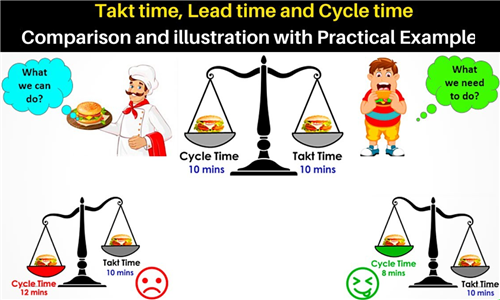


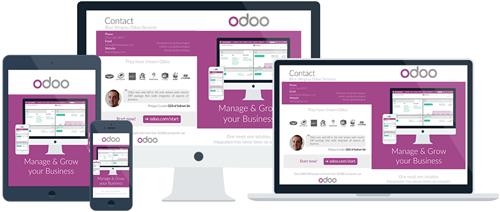

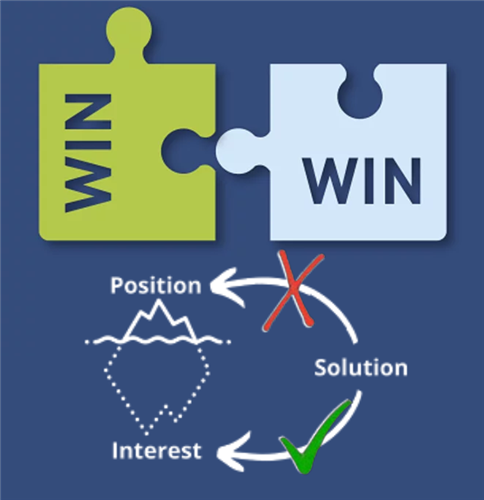
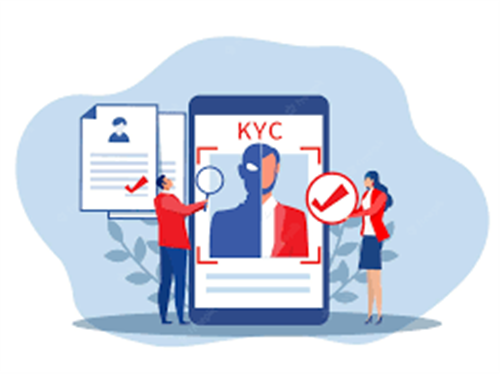






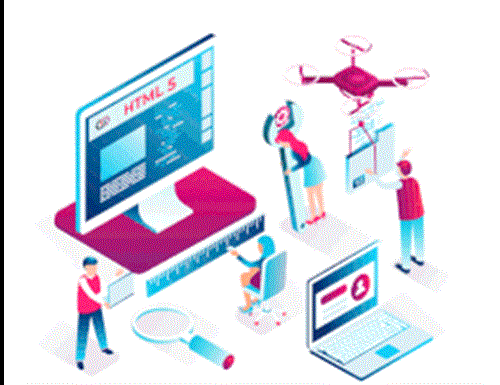
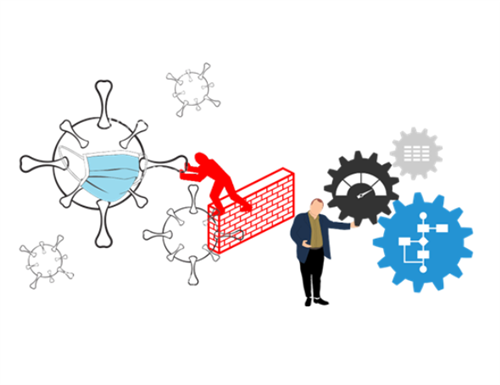

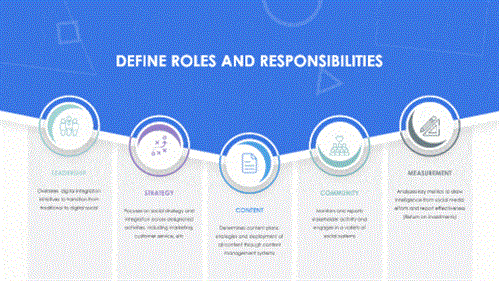

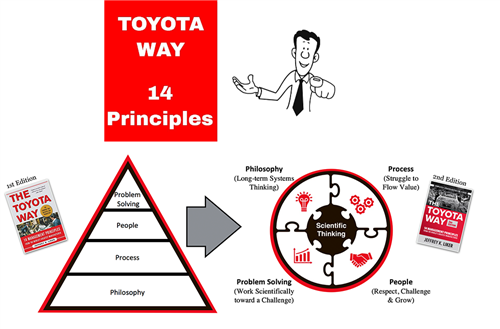









 Link copied!
Link copied!
 Recently Updated News
Recently Updated News